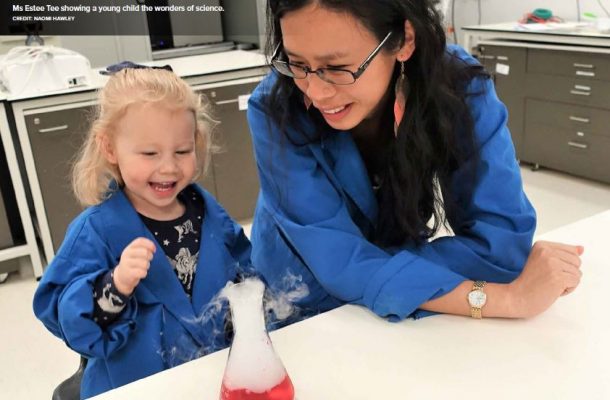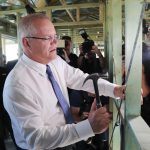A lack of women in STEM harms Australian prosperity

Australia has not yet made the systemic changes required to achieve diversity in science, technology, engineering and mathematics (STEM), with the current under-representation and under-utilisation of women in the STEM workforce posing a threat to Australia’s prosperity.
The findings are contained in the Women in STEM Decadal Plan launched this evening at Parliament House by the Minister for Industry, Science and Technology, Karen Andrews. The plan was developed by the Australian Academy of Science in partnership with the Australian Academy of Technology and Engineering.
It outlines six opportunities to strengthen gender equity in STEM in Australia over the next 10 years, including establishing a national evaluation framework to guide decision making and drive investment and effort into STEM measures that work.
Australian Academy of Science Fellow and Expert Working Group member, Professor Sue O’Reilly AM FAA, said while many organisations are taking actions at an individual level to support the attraction, retention and progression of women in STEM, extensive stakeholder consultations confirmed there is an urgent case for cohesive, systemic and sustained change.
“Change can commence at the grassroots and this should not be discouraged. However, the systemic and sustained change required to make a step change in achieving gender equity in Australia will primarily occur when led and championed from the top,” Professor O’Reilly said.
The decadal plan highlights the economic case for gender equity, citing the 2017 World Economic Forum’s ‘Gender gap report’ which estimates that closing the gender gap in economic participation by 25% by 2025 could add as much as US$5.3 trillion to global gross domestic product (GDP) in the same timeframe (10).
“It’s not just an equality perspective that’s important here, it’s a business imperative,” said Australia’s first ambassador for Women in STEM, Professor Lisa Harvey-Smith.
“Australia needs to be the clever country again. We need to be getting those large tech companies to stay in Australia and we need to be developing business capabilities around the new economies and become worldwide competitive again.”
Dr Bruce Godfrey, Vice President of Diversity at the Australian Academy of Technology and Engineering, said the plan provides the first opportunity to tackle the issue of gender equity at a national scale and highlights the importance of government, academia, industry, the education sector and the community working together to drive change.
“If this plan and the opportunities contained within it are realised, the STEM graduates of 2030—9- and 10-year-olds making their way through primary school in 2019, as well as those entering the workforce from other life journeys—will join workplaces that are respectful, free of harassment and discrimination, value diversity, and structured to support a variety of STEM careers that include women in leadership positions,” Dr Godfrey said.
The starting point for the implementation of the plan is a Pathways to Equity in STEM workshop hosted by the Academies in Melbourne on 3 April. It will provide an opportunity for delegates to learn what other organisations are doing in the gender equity space, providing a platform for both learning and collaboration.
The Women in STEM Decadal Plan outlines six key opportunities to drive that change over the next decade and equip Australia’s STEM workforce for the future.
1. Leadership – stronger cohesion and leadership across the STEM ecosystem across Australia would amplify and strengthen diversity outcomes.
2. Evaluation – Establishing a national evaluation framework will guide decision making and drive investment and effort into measures that work.
3. Workplace culture – a significant cultural shift in workplaces is necessary to create gender equity for women in STEM. A culture that is inclusive and respectful, challenges traditional stereotypes, is free of discrimination and bias, enables flexibility and accommodates career interruptions would maximise women’s participation in the workforce.
4. Visibility – continually seeing women in diverse STEM careers, and equally represented in the media, in public events, and in non-public facing forums like boardrooms and classrooms would provide role models for girls and women and inspire a nation.
5. Education – strengthening the education system to support teaching and learning at a national scale would enable and encourage all girls and women at all levels to study STEM subjects and equip them with the skills and knowledge to participate in diverse STEM careers.
6. Industry action – establishing a national framework that guides and provides tools to address gender diversity amongst SMEs would reach and impact the vast majority of businesses not reached by existing programs.
Against each opportunity are strategic recommendations that government, academia, industry, the education sector and the community can individually and collectively customise to their sectors.
The decadal plan was announced in the 2018–19 Federal Budget and was developed through research and consultation covering every state and territory, involving written submissions, stakeholder interviews and roundtable discussions. It was overseen by an Expert Working Group comprising Fellows of both academies, early- and mid-career researchers, education experts and Australia’s Women in STEM Ambassador.
Open Forum is a policy discussion website produced by Global Access Partners – Australia’s Institute for Active Policy. We welcome contributions and invite you to submit a blog to the editor and follow us on Twitter, Facebook, Linkedin and Mastadon.













